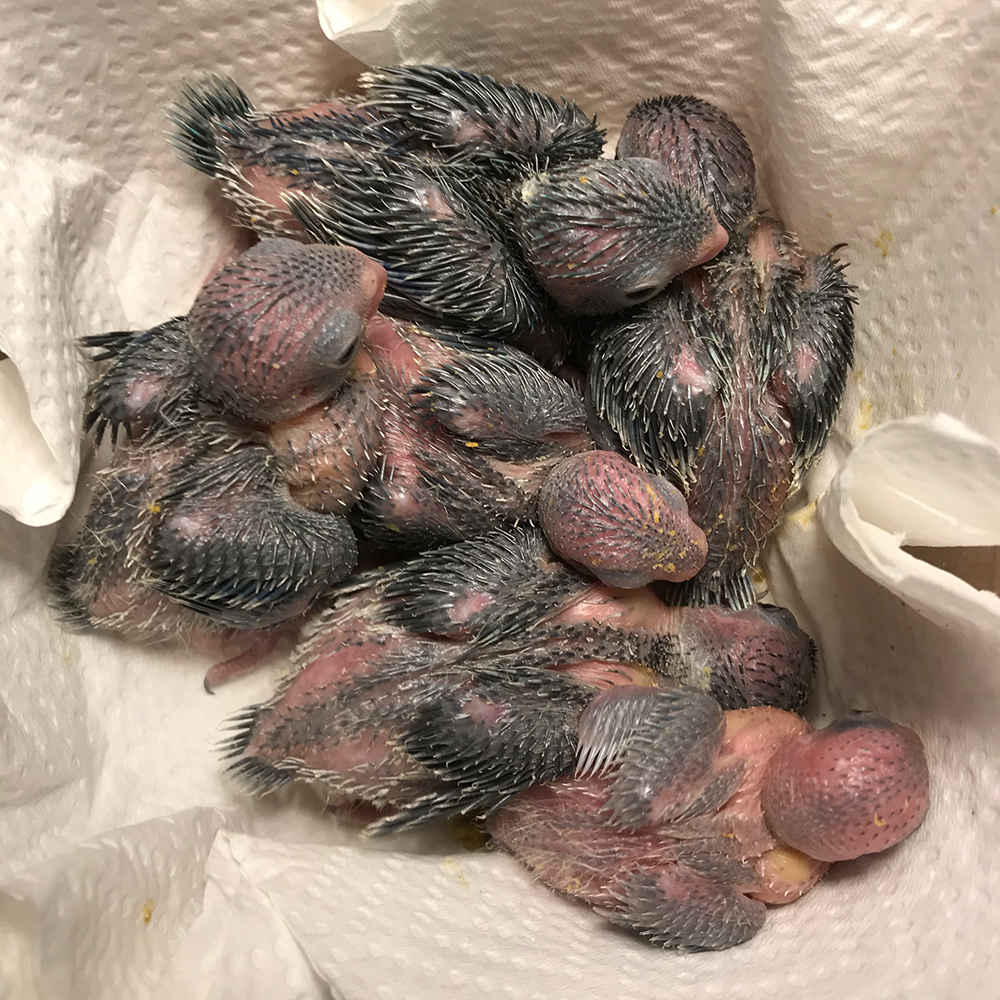
Thinking of breeding Parrotlets?
Spoiler alert: Only experienced breeders need apply
Of the entire animal kingdom, 95% of birds and only 5% of mammals (including humans) are the only creatures that form long term partnerships. The reason for this difference is because of the necessity to raise altricial young. Parrotlets for example, produce totally immature offspring. These altricial young parrotlets are naked (of feathers), blind, helpless, and in need of long-term care; usually for anywhere up to six weeks from hatching. It is therefore this long-term investment in relationships that have allowed both birds and humans to evolve.
This production of altricial offspring is thought to explain the heightened levels of intelligence seen in both birds and humans because the longer the young spend under parental care outside of their mother, the longer their brain has to develop. In fact, a bird and human brain grows to between eight to ten times the size at hatching/birth, compared to all other species who raise precocial young that increase brain size by a mere two to three times.
Thinking about how FAST this growth occurs, and the fact that the brain uses an astonishing 60% of all nutrient intake, it is no wonder that parrotlet parents are kept busy feeding their young. This is not to mention the requirement for maintenance of their young’s body temperature through virtually constant contact with the naked chicks (i.e. brooding). Then there is the incredibly low parent body weight to egg/chick weight ratio with parrotlets.
Unfortunately, parrotlet parents will not always meet these demanding feeding and brooding requirements. There can be many reasons for this such as: a lack of parenting skills/experience, poor diet, illness or death of a parent, or (in light of the above) just due to the high demands of a large nest of more than four chicks. The average nest is around five chicks incidentally. Any such circumstances may present a requirement for the birdkeeper to hand-raise one or more parrotlet chicks to ensure their survival.
As parrotlets are the smallest captivity bred parrots, they are NOT easy to handle for hand raising, especially under emergency conditions with chicks that are less than 14 days of age. Because such dire circumstances cannot be predicted, the only humane thing to do is to be fully prepared for these kinds of eventualities in advance…
It is therefore the view of the author that ANY birdkeeper breeding parrotlets, whether or not they intend on hand-raising the young, must have the following BEFORE allowing parrotlets to breed:
- personal experience in hand raising of small or medium sized birds
- a brooder cabinet
- feeding equipment
- Hand-raising formula
- sufficient time/availability to administer five feeds per day for up to six weeks of age
Maintaining an adequate hand-feeding routine and correct brooder temperatures for the hand-raising of parrotlet chicks is both crucial and demanding. These factors can determine the survival or demise of parrotlet offspring within mere hours.
To ensure the health and wellbeing of parrotlets, the specifics for parrotlet breeding such as parent diets, housing, supplementation, dealing with complications such as egg-binding and hand-raising of parrotlets are topics which ought to be thoroughly researched in advance. Even then, parrotlet breeding ought only be attempted by experienced bird breeders with available foster parents, time/resources for hand-raising, or experienced hand-raisers at the ready.
Some may disagree, saying: “No it was easy for me”… and that may be true. Perhaps they had perfect parrotlet parents who raised the young. But it is only easy until the time when it is not.




